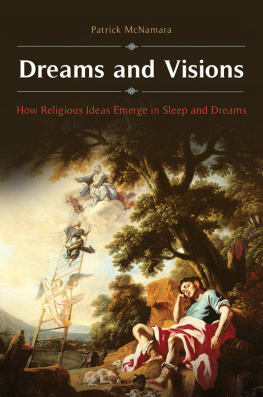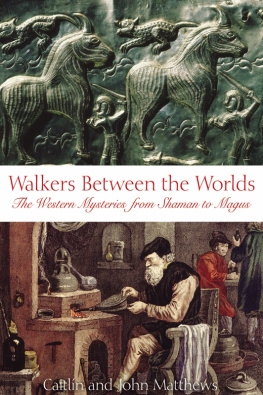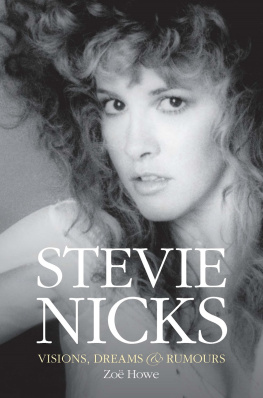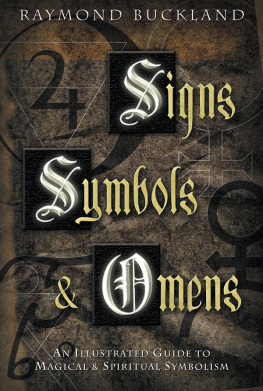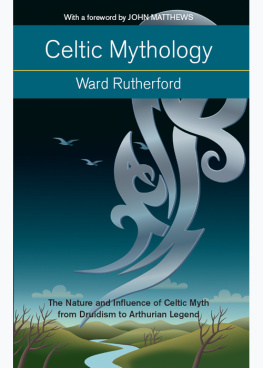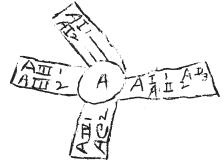Caitlin Matthews - Celtic Visions: Seership, Omens and Dreams of the Otherworld
Here you can read online Caitlin Matthews - Celtic Visions: Seership, Omens and Dreams of the Otherworld full text of the book (entire story) in english for free. Download pdf and epub, get meaning, cover and reviews about this ebook. year: 2012, publisher: Duncan Baird Publishing, genre: Religion. Description of the work, (preface) as well as reviews are available. Best literature library LitArk.com created for fans of good reading and offers a wide selection of genres:
Romance novel
Science fiction
Adventure
Detective
Science
History
Home and family
Prose
Art
Politics
Computer
Non-fiction
Religion
Business
Children
Humor
Choose a favorite category and find really read worthwhile books. Enjoy immersion in the world of imagination, feel the emotions of the characters or learn something new for yourself, make an fascinating discovery.
- Book:Celtic Visions: Seership, Omens and Dreams of the Otherworld
- Author:
- Publisher:Duncan Baird Publishing
- Genre:
- Year:2012
- Rating:4 / 5
- Favourites:Add to favourites
- Your mark:
- 80
- 1
- 2
- 3
- 4
- 5
Celtic Visions: Seership, Omens and Dreams of the Otherworld: summary, description and annotation
We offer to read an annotation, description, summary or preface (depends on what the author of the book "Celtic Visions: Seership, Omens and Dreams of the Otherworld" wrote himself). If you haven't found the necessary information about the book — write in the comments, we will try to find it.
Celtic Visions: Seership, Omens and Dreams of the Otherworld — read online for free the complete book (whole text) full work
Below is the text of the book, divided by pages. System saving the place of the last page read, allows you to conveniently read the book "Celtic Visions: Seership, Omens and Dreams of the Otherworld" online for free, without having to search again every time where you left off. Put a bookmark, and you can go to the page where you finished reading at any time.
Font size:
Interval:
Bookmark:

CAITLN MATTHEWS is one of the few people to have explored the Celtic vision and seership traditions from both source materials and also from personal practice. Her seership programme Augury and Inspiration: Celtic Divination from Nature has been given all over the world. She is a founder of FOS, the Foundation for Inspirational and Oracular Studies, dedicated to the oral and unwritten arts of divination, ancestral ritual, augury and oracular vision. She is the author of over 60 books.
To study with Caitln Matthews, see www.hallowquest.org.uk for details of her courses, books and events.
A Selection of Books by Caitln Matthews
Celtic Devotional
Celtic Myths and Legends
Celtic Book of the Dead
Encyclopedia of Celtic Wisdom
Singing the Soul Back Home
King Arthurs Raid on the Underworld
Mabon and Guardians of Celtic Britain
Storyworld
Seership, Omens
and Dreams
of the Otherworld
CAITLN MATTHEWS

This book is dedicated to my son,
Emrys Matthews: may the glfiosa
shine upon his way!
ACKNOWLEDGEMENTS
I thank Dwina Murphy Gibb for conversations about the charm, Robert Moss for his insights into dreaming, and RJ Stewart for his skilful opening of faery doors. As ever, thanks to John for graciously holding the space and to my students for being the sounding boards of these teachings.
Contents
INTRODUCTION
Kindling the Bright Knowledge
W hat we see and what we imagine has one connected life. For the people of the ancient Celtic world, seership opened windows into the otherworld. It awakened the essence of true vision and wisdom, which was known by the poets as the glfiosa or the bright knowledge.
Seership is a means of understanding the connections between the two sides of reality: both the physical, manifest world that is perceptible by our everyday senses, as well as the invisible, unmanifest world that we perceive with our inner senses. When seers go seeking, they expand their consciousness to perceive the wider reality of the whole. At one time this skill was more commonly shared by our ancestors who had a strongly developed instinct, but there have always been specialists whose senses were yet more attuned to that wider reality; individuals who could sense from the movement or location of animals, who smelt the coming of a dangerous event or when a sickness augured certain death.
The primordial condition of the human soul is based upon metaphors of perception: this primal language of the soul is received by the inner senses and conveyed primarily through the images and metaphors of storytelling, song and poetry. When viewing a landscape, the seer saw not just the hills or rivers, but a living world in which the sound of the waters, the wind through the trees and the movements of animals were meaningful. Each place had its own memories where certain teachings or stories might be remembered. A land feature thus had power to reconnect the physical and unseen sides of reality, becoming a threshold where past, present and future fused into a single focus for knowing and understanding. A hill or a well had its spirit that was a living witness.
That we have fallen out of such a way of understanding the living world is evident: we rush to work unaware of the spirit of a noble birch tree that stands by the wayside, we pass unseeing through an area once famous for a battle, we ignore the ancestral wisdom that rises up in us. Our instincts have been tuned down, our insights dulled from too much electronic interface and our inspirations ignored because we dont live in a society that validates the gifts of seership or vision.
Some people are born with the second sight, which in Scots Gaelic is called an da shealleadh, literally meaning the two seeings. Those in possession of the second sight perceive not only the physical semblance of a person or an event, but also its spiritual aspect as well. In an age that welcomes all kinds of signs and wonders, it should be remembered that the second sight was, and still is, an unwelcome gift for those who possess it, for it comes unbidden and can seldom be ignored or removed, only tuned down. Seers do not boast of their skill because the responsibility for their perceptions is too heavy.
Diviners skills were pragmatically sought out to find lost people or animals that had strayed, to discover news of fartravelling relatives or those who went into battle in an age with no instant means of communication. The interpretive skills of the seer might be welcome in times of need or very unwelcome indeed as when the poor Brahan Seer dared to speak the truth to a powerful lady and was killed for his temerity.
Methods of Celtic seership and vision have been my study for many years, both from written sources as well as from oral transmission and personal practice. With many students worldwide, Ive explored how these methods can work today. The teaching of these skills has largely concentrated on enabling and recognizing the natural perceptions that everyone potentially possesses. Many people have discovered that their vision can also be fruitful, helpful and accurate. Practice over many years grows confidence and underscores the validity of the evidence. Seership is an inborn gift, but vision is a skill that can be reawakened within us by patient observation and faithful practice, by stillness, and the absence of stimulus or interruption. By slowing down, carrying a question patiently within our hearts, we can consider the evidence of our heightened senses and the verification of our dreams.
I have chosen to look at Celtic seership and visionary traditions across a wide range of material from different eras and traditions: the Gaelic strand is the strongest because there is more extant material. Many will complain that I have left out essential elements from this little book, but I have done my best with the space available.
In Chapter 1 we meet some of the seers and visionaries of the Celtic world, while in Chapter 2 we explore the second sight and the way of vision. These arise in the otherworld and are associated with faery, as we find in Chapter 3. In Chapter 4 we enter the Dark Cell where poets honed their visions and in Chapter 5 we investigate their prophetic skills. In Chapter 6 we go to the heart of fate and destiny that are the core discernments of vision. The art of prophecy is explored in Chapter 7, while in Chapter 8 we find the skill of reading omens and making divinations. Lastly, in Chapter 9, we open up the seers worldview of sacred wholeness. Extracts and translations are sourced in the notes on p.213 while the glossary on p.225 gives the pronunciation of Celtic specialist words.
Ways to kindle the glfiosa are given throughout this book. Be aware that they are merely signposts to wisdom, not the wisdom itself. That arrives in the still silence of darkness, shimmers on every hedgerow and sparkles at the waters edge. If you would kindle the bright knowledge for yourself, use these signposts and take the journey. Reading alone will not bring it any closer.
Do not expect experiences to match or echo what you know or suspect about Celtic beliefs. You perceive through your own cultural filters and background. Allow perceptions to arise through the natural array of your senses and be prepared to step out of the way of yourself, quieting your minds chatter to experience what lies beyond. All methods presuppose that you practise these ways in a quiet and undisturbed space, without phones or music, and with respect. Assess your findings neutrally, without judgement or overrationalization. It is usual to think you are making things up, for about the first four years of practising. You will pass beyond this stage to understand and honour your experiences better.
Font size:
Interval:
Bookmark:
Similar books «Celtic Visions: Seership, Omens and Dreams of the Otherworld»
Look at similar books to Celtic Visions: Seership, Omens and Dreams of the Otherworld. We have selected literature similar in name and meaning in the hope of providing readers with more options to find new, interesting, not yet read works.
Discussion, reviews of the book Celtic Visions: Seership, Omens and Dreams of the Otherworld and just readers' own opinions. Leave your comments, write what you think about the work, its meaning or the main characters. Specify what exactly you liked and what you didn't like, and why you think so.



